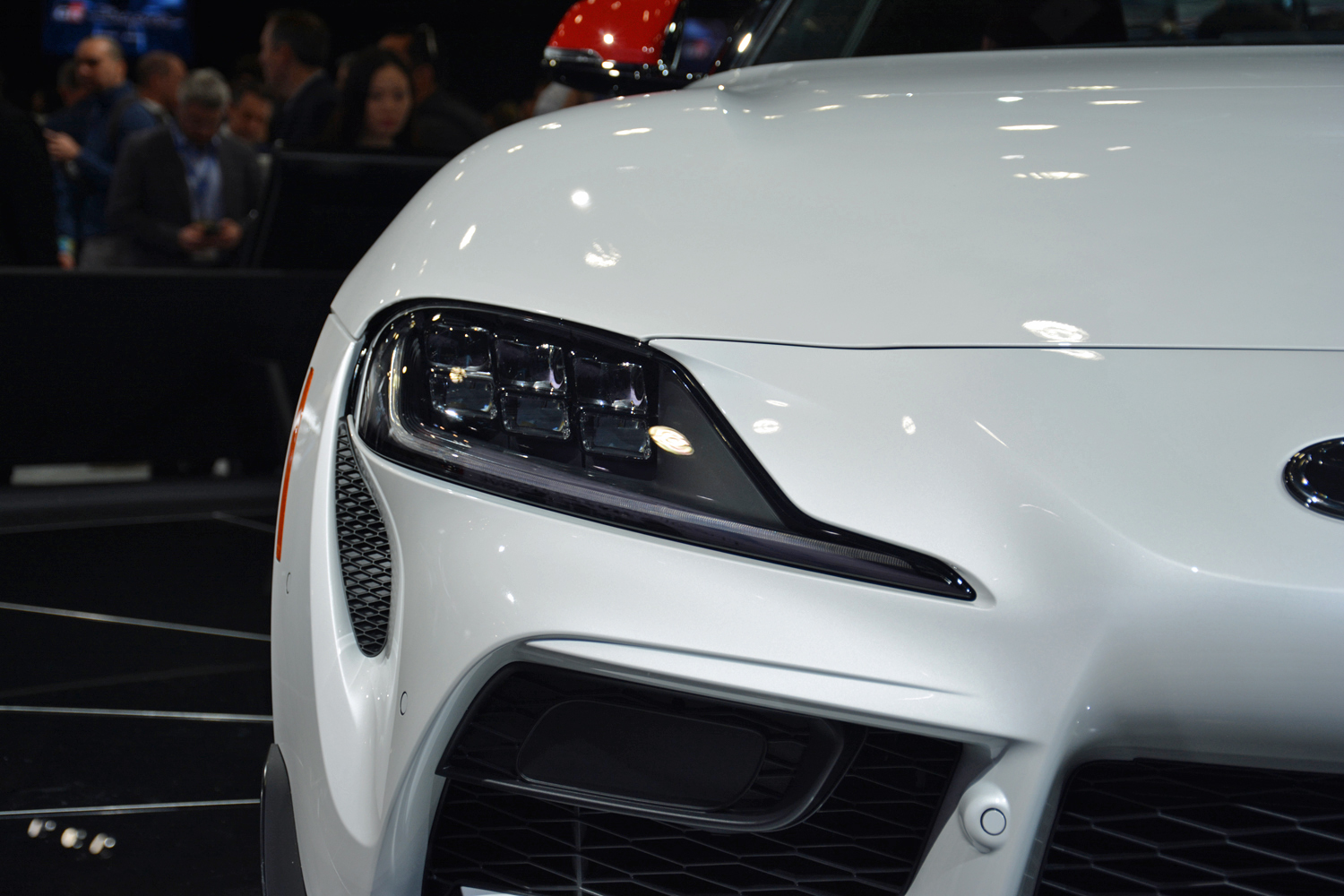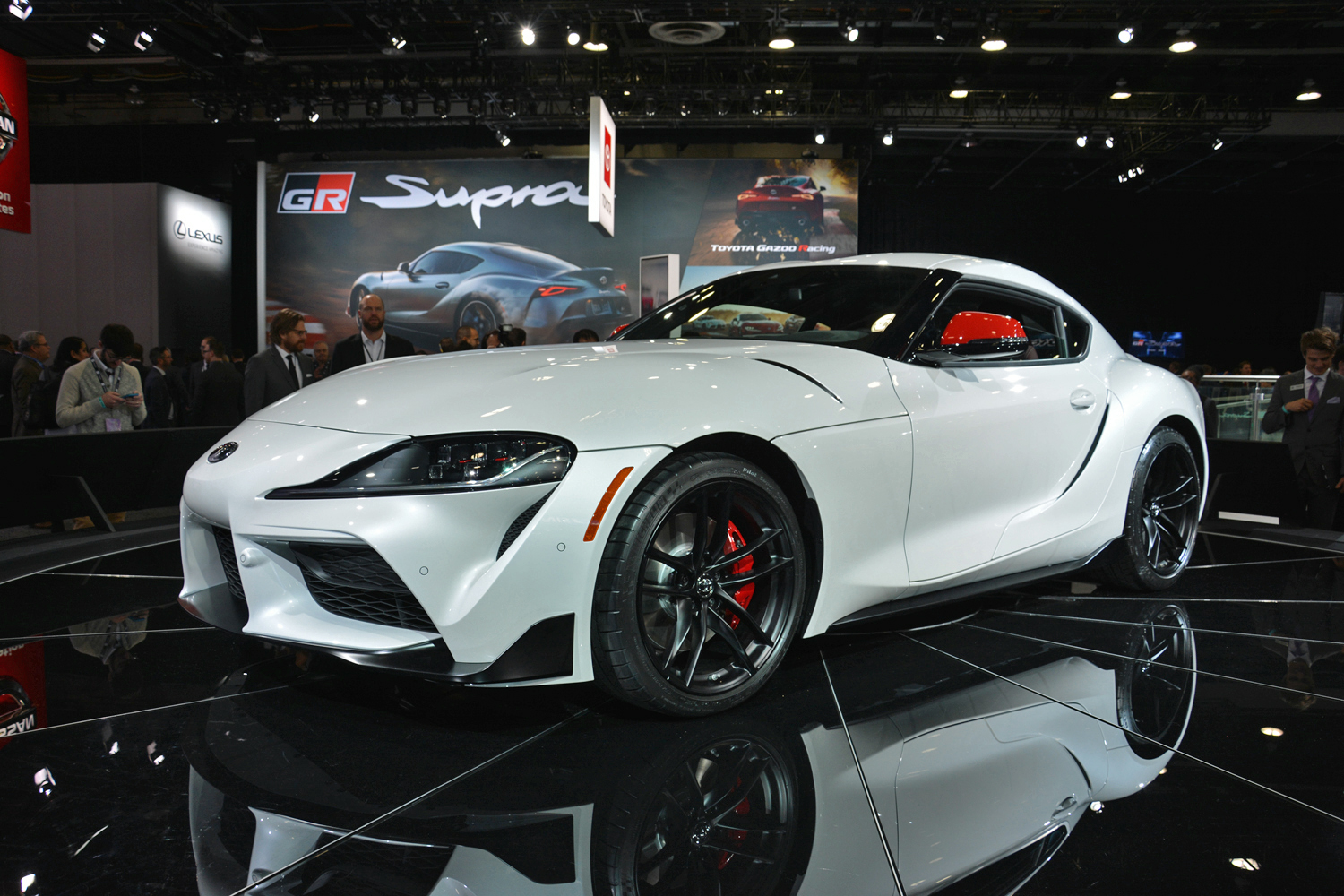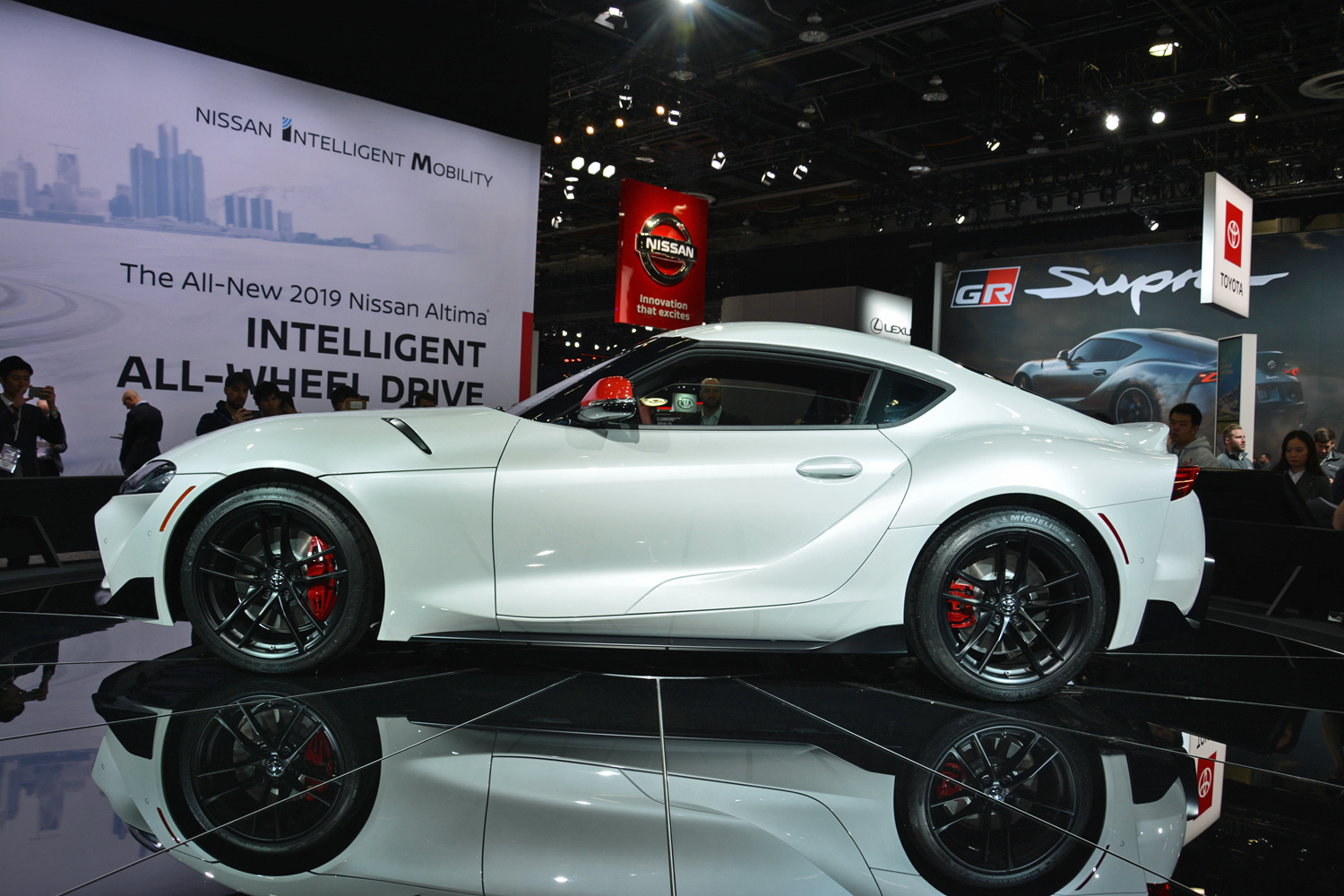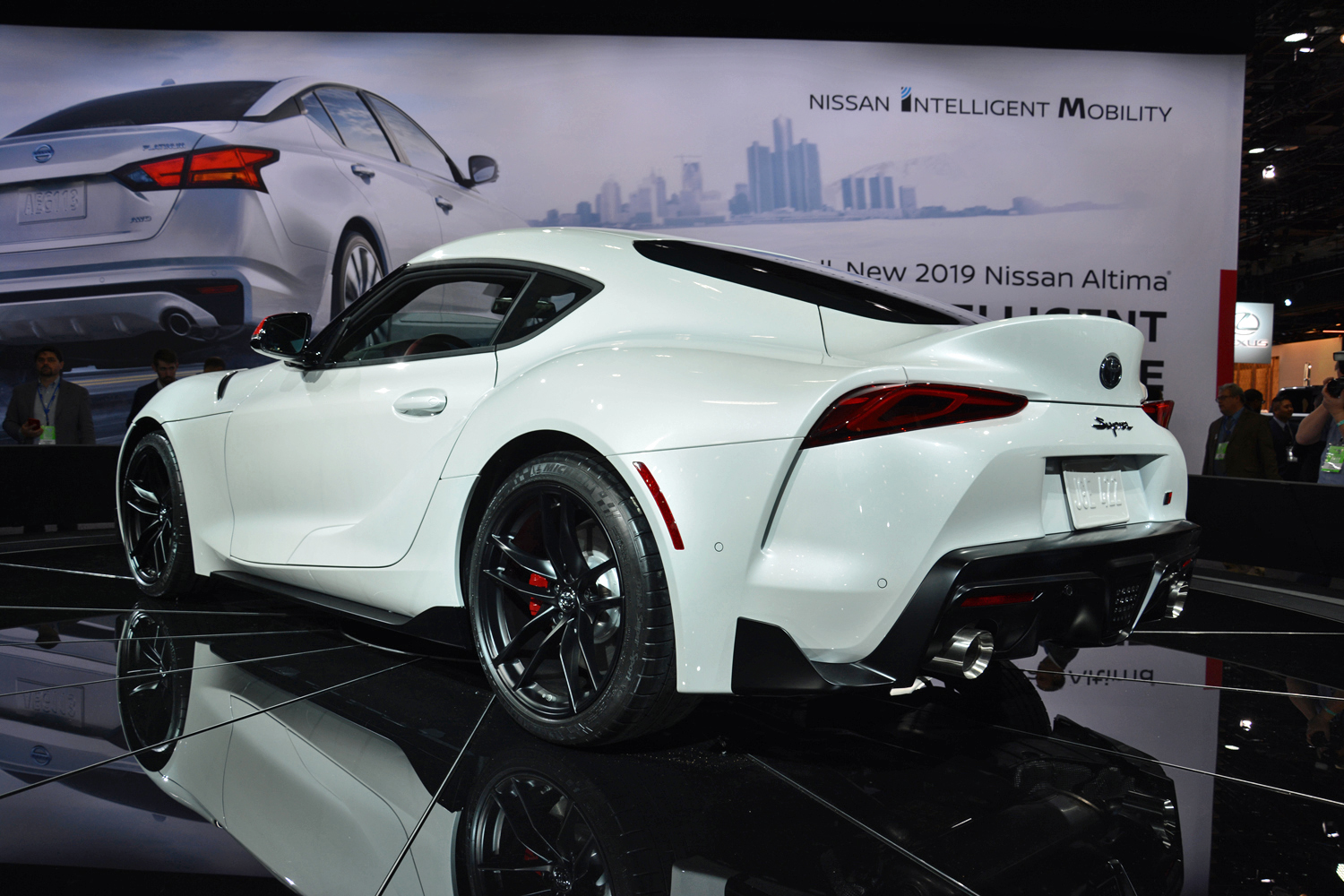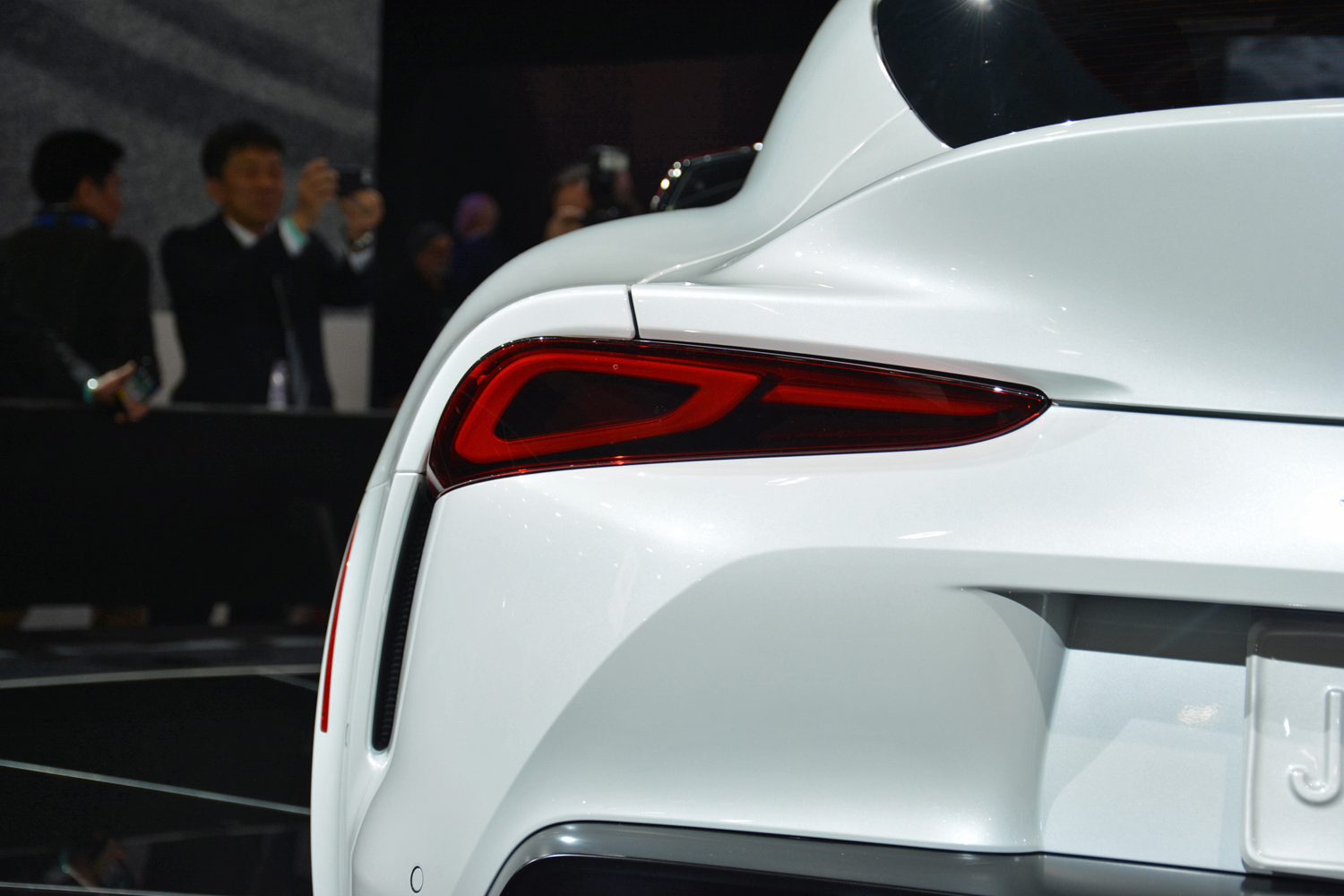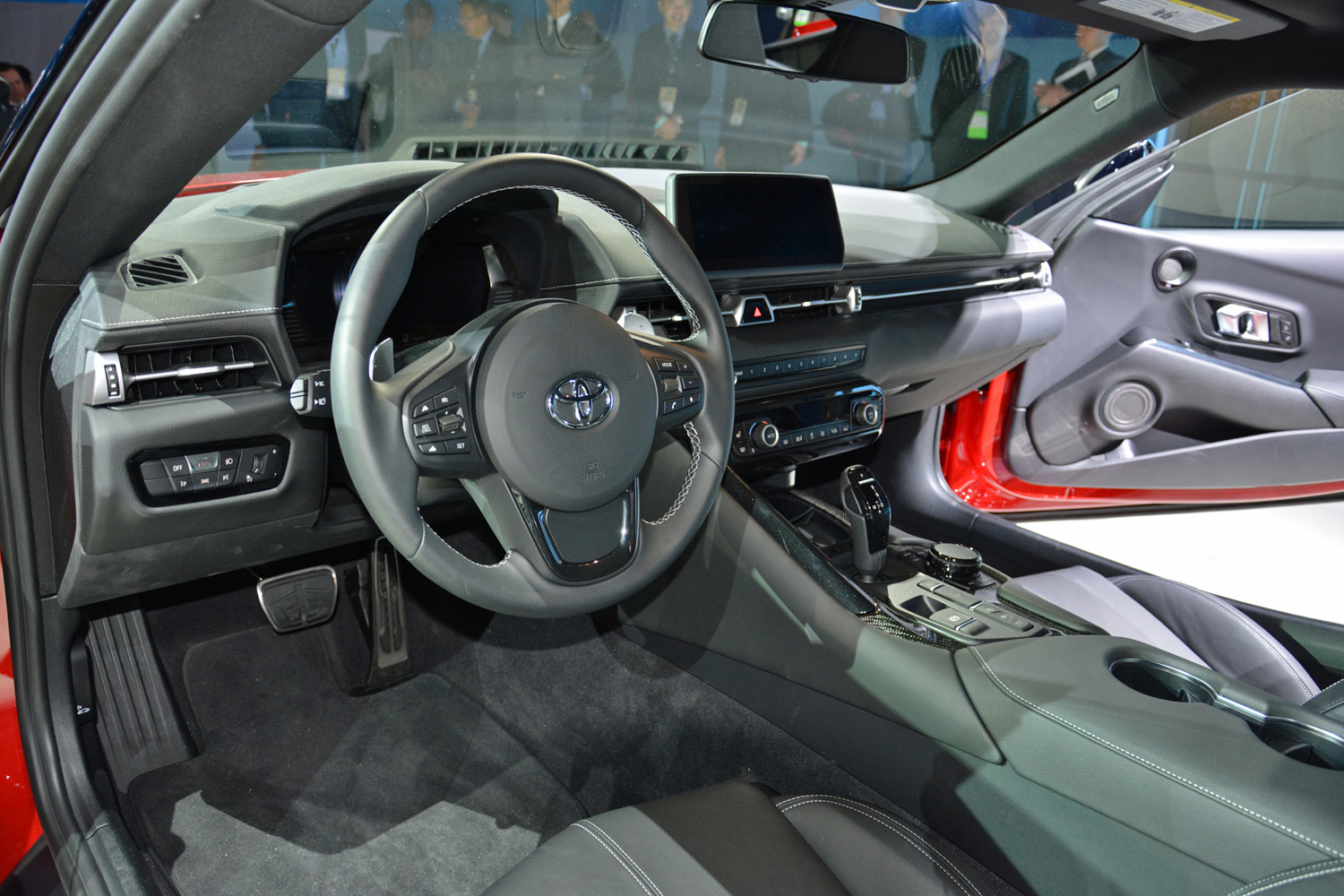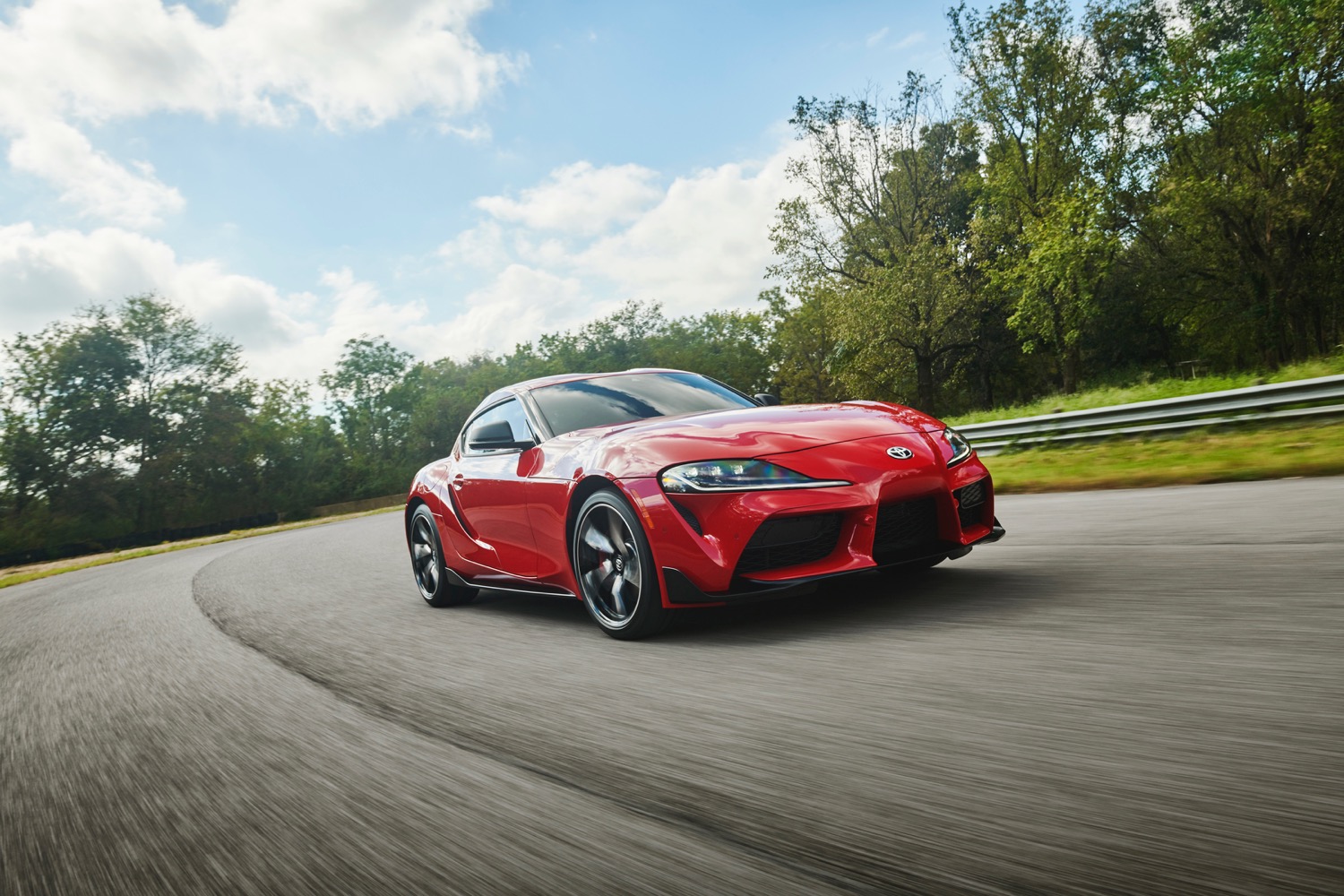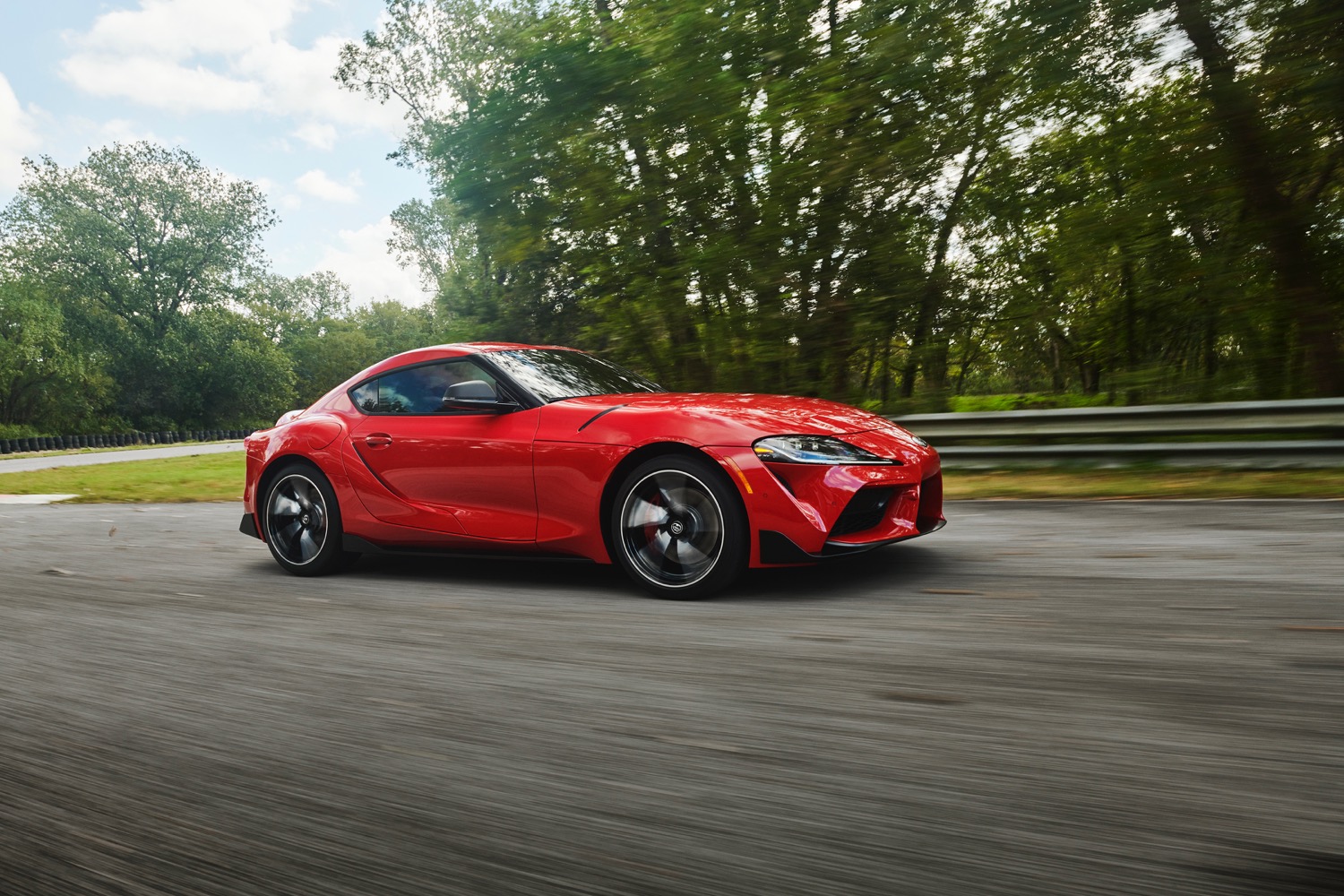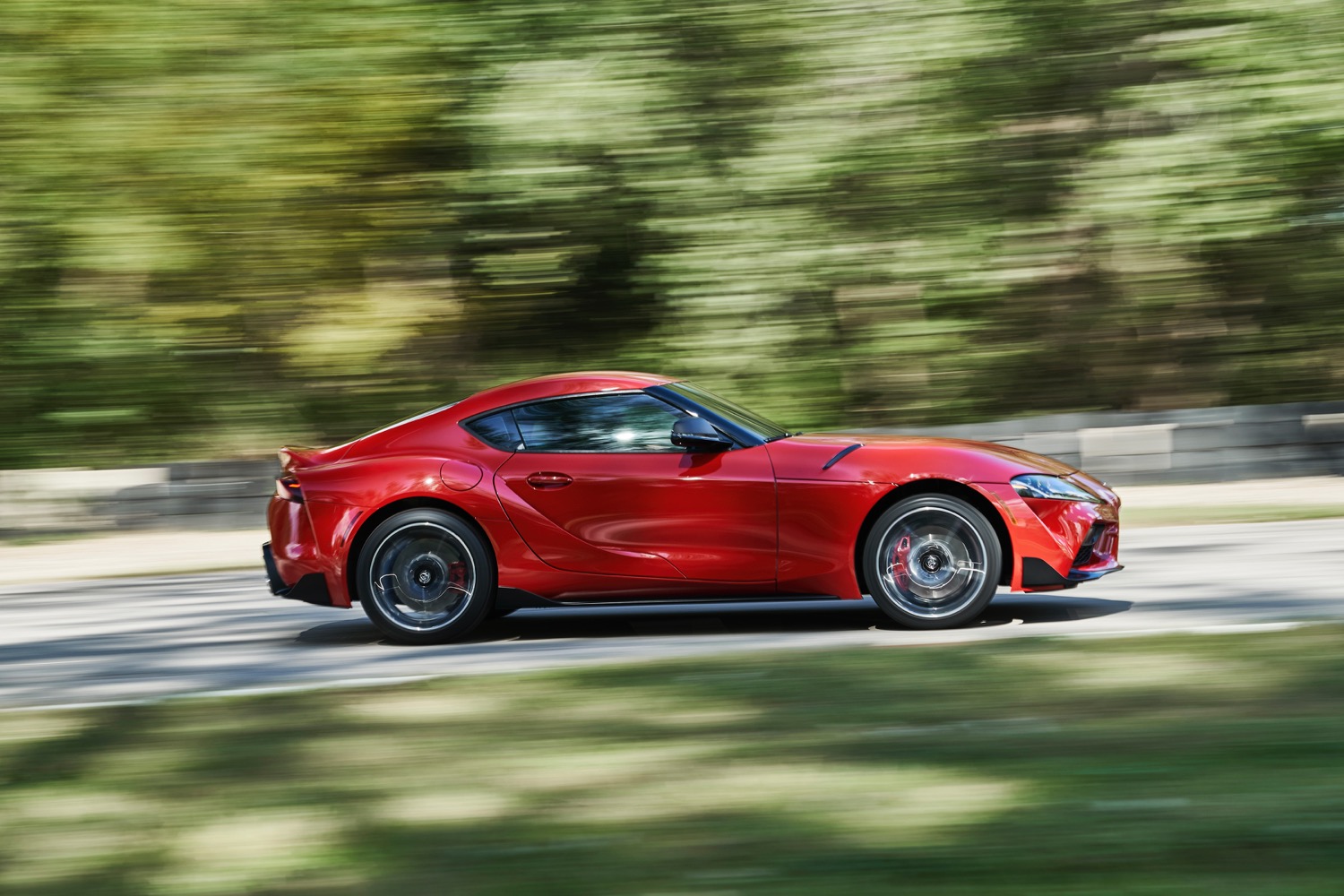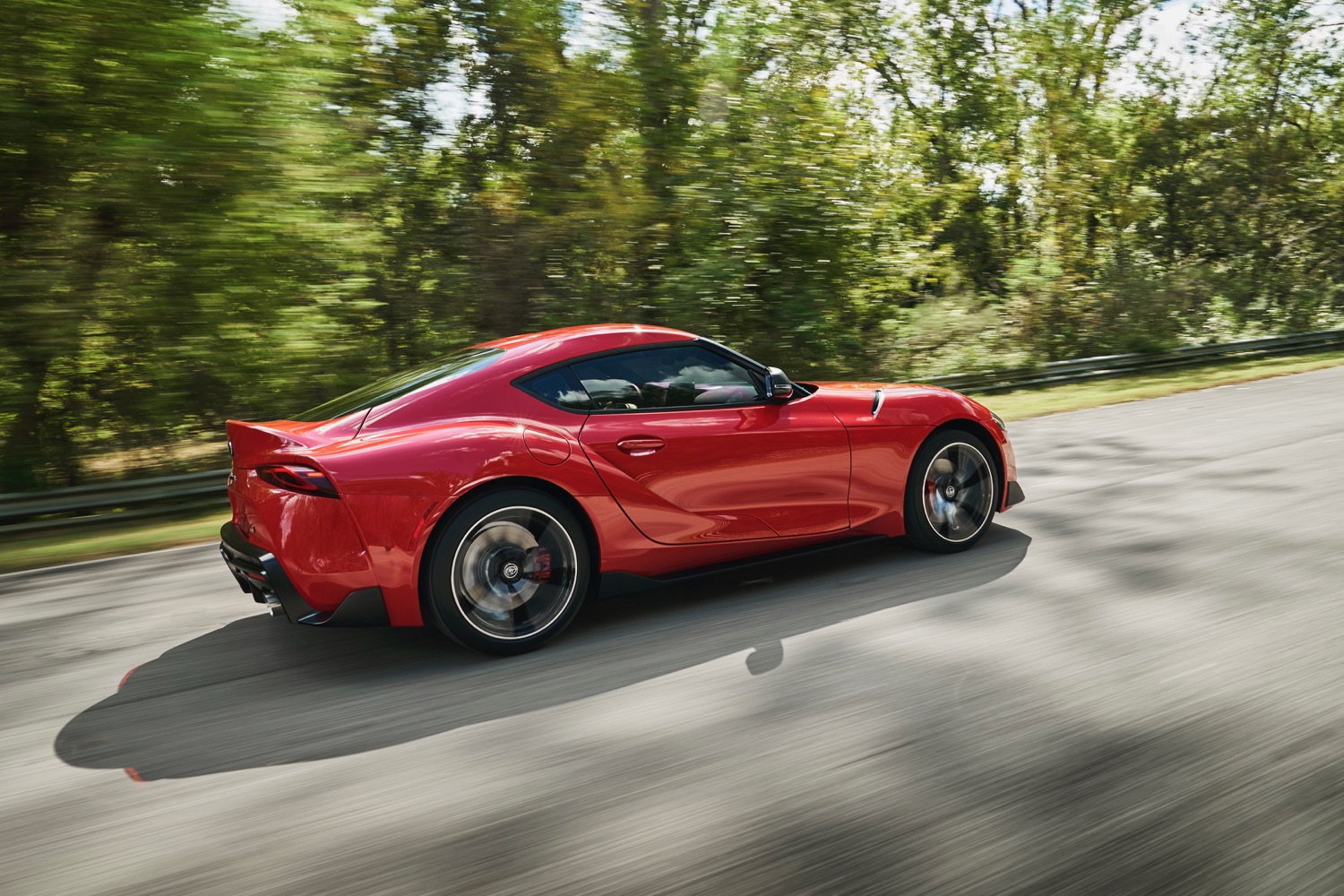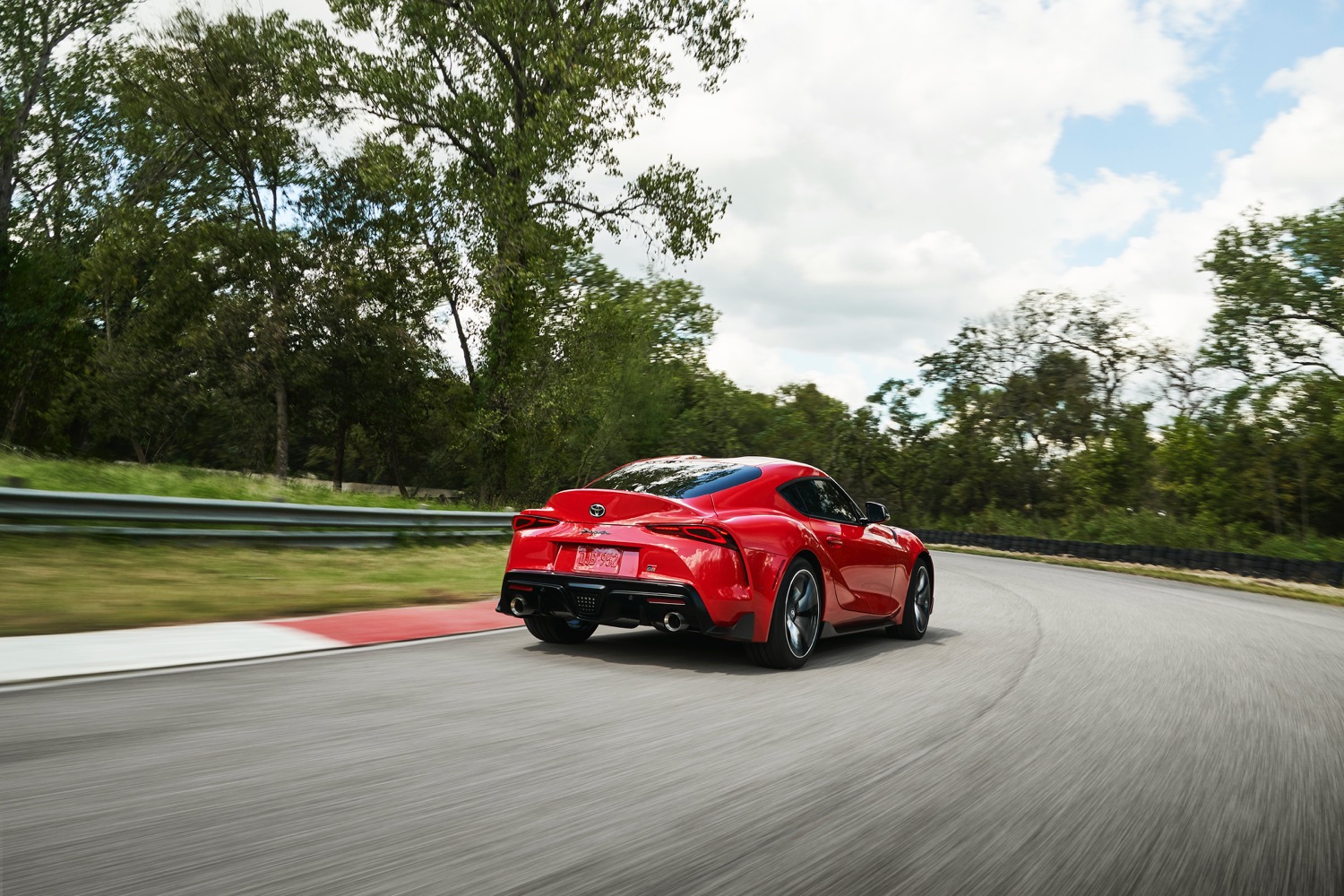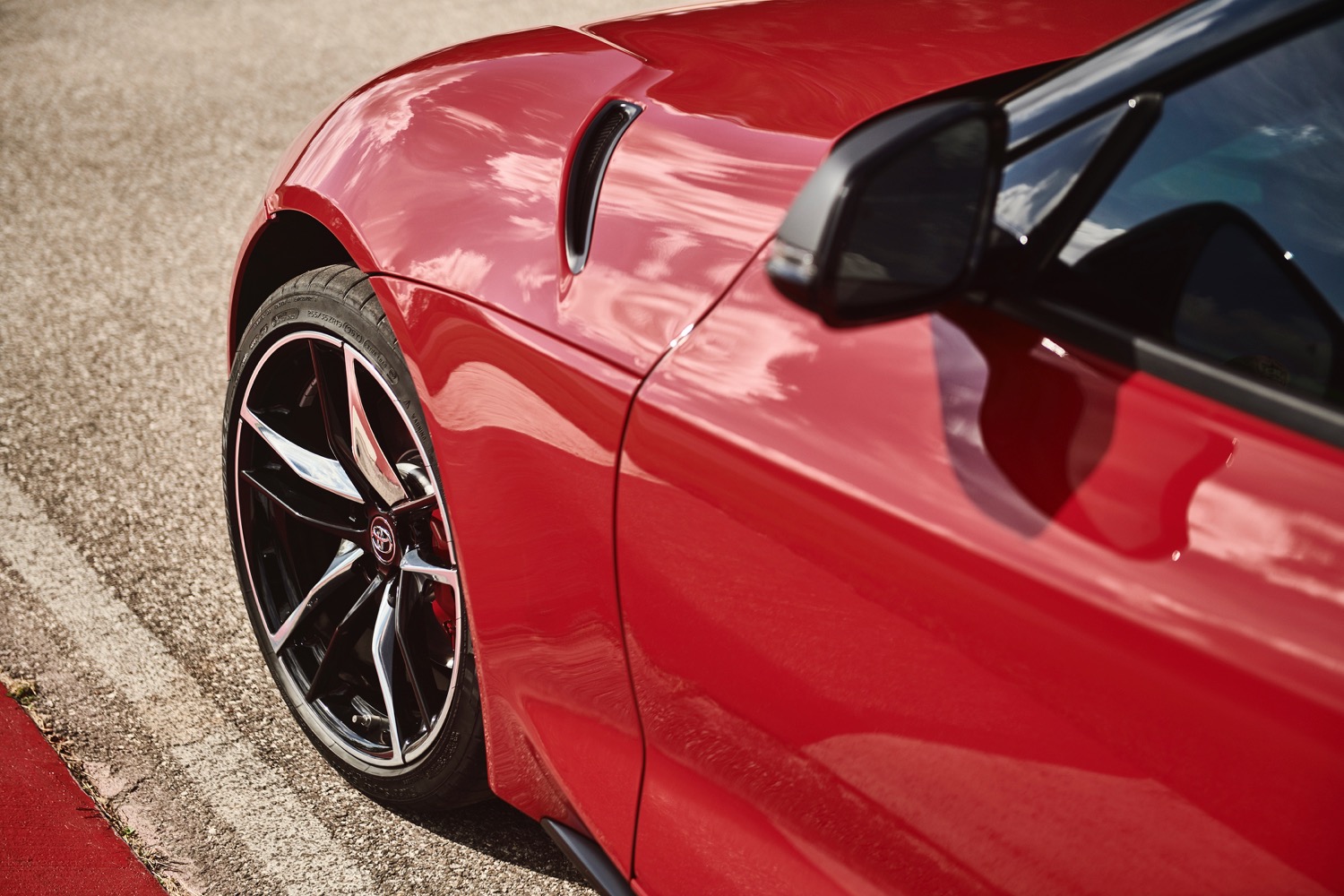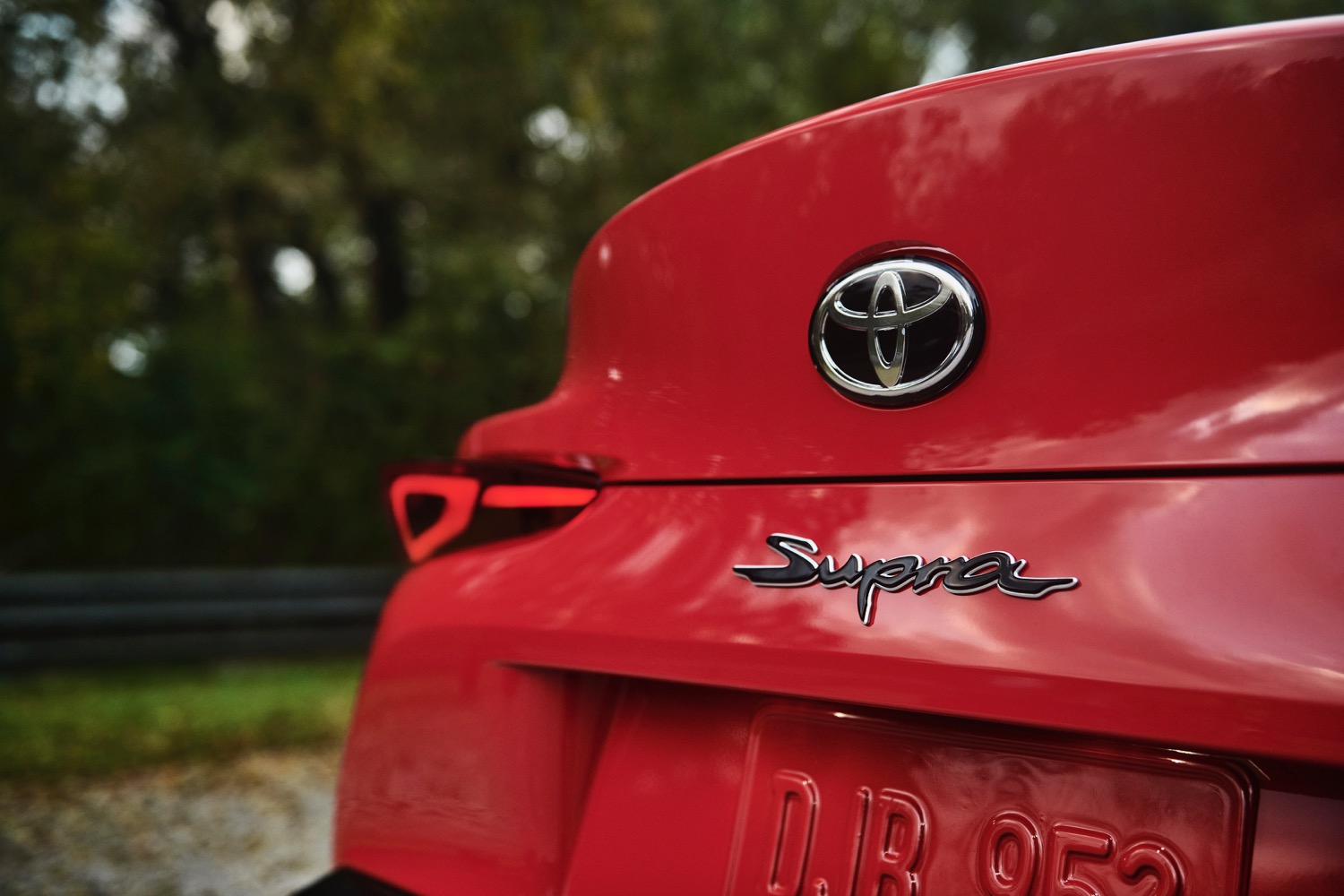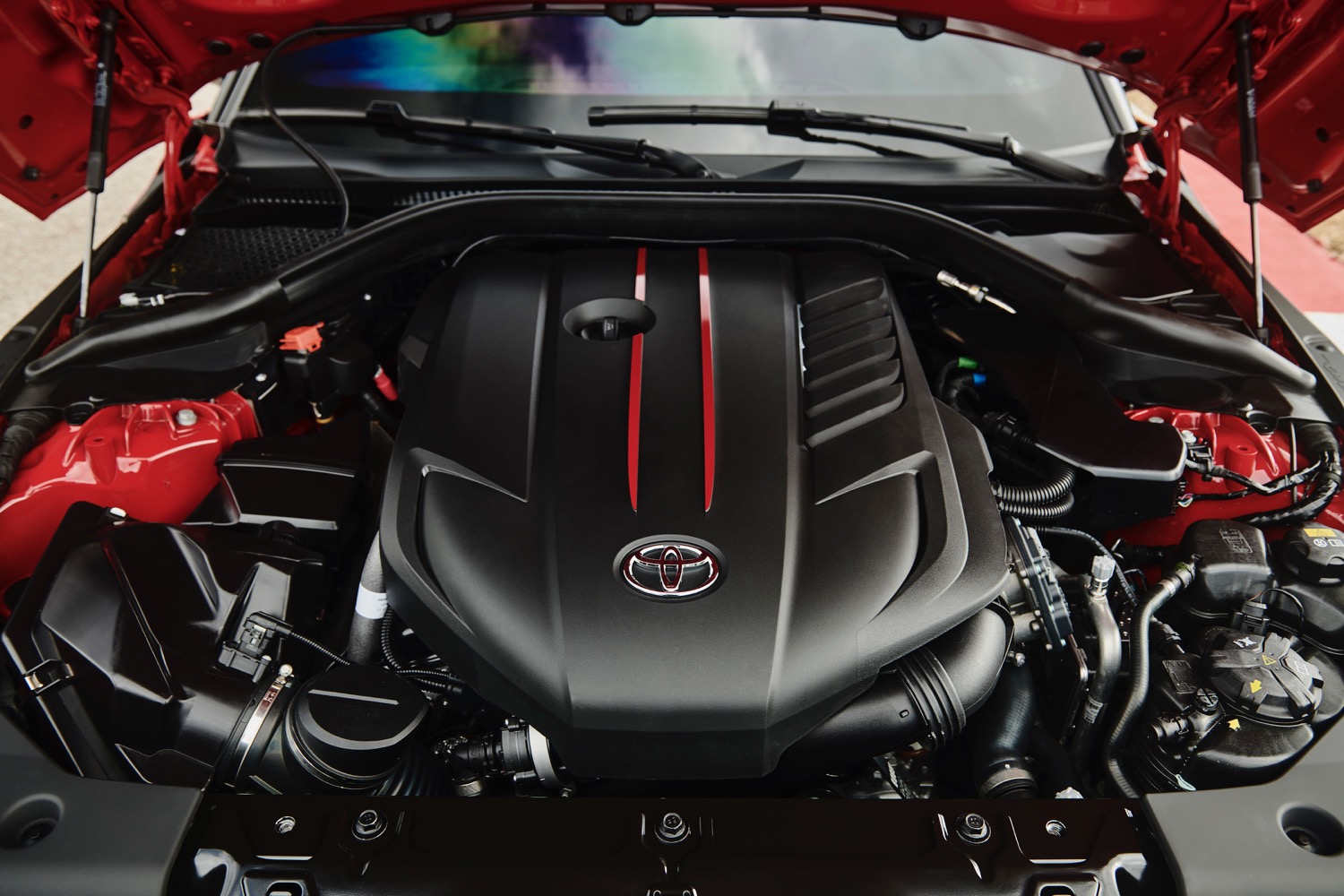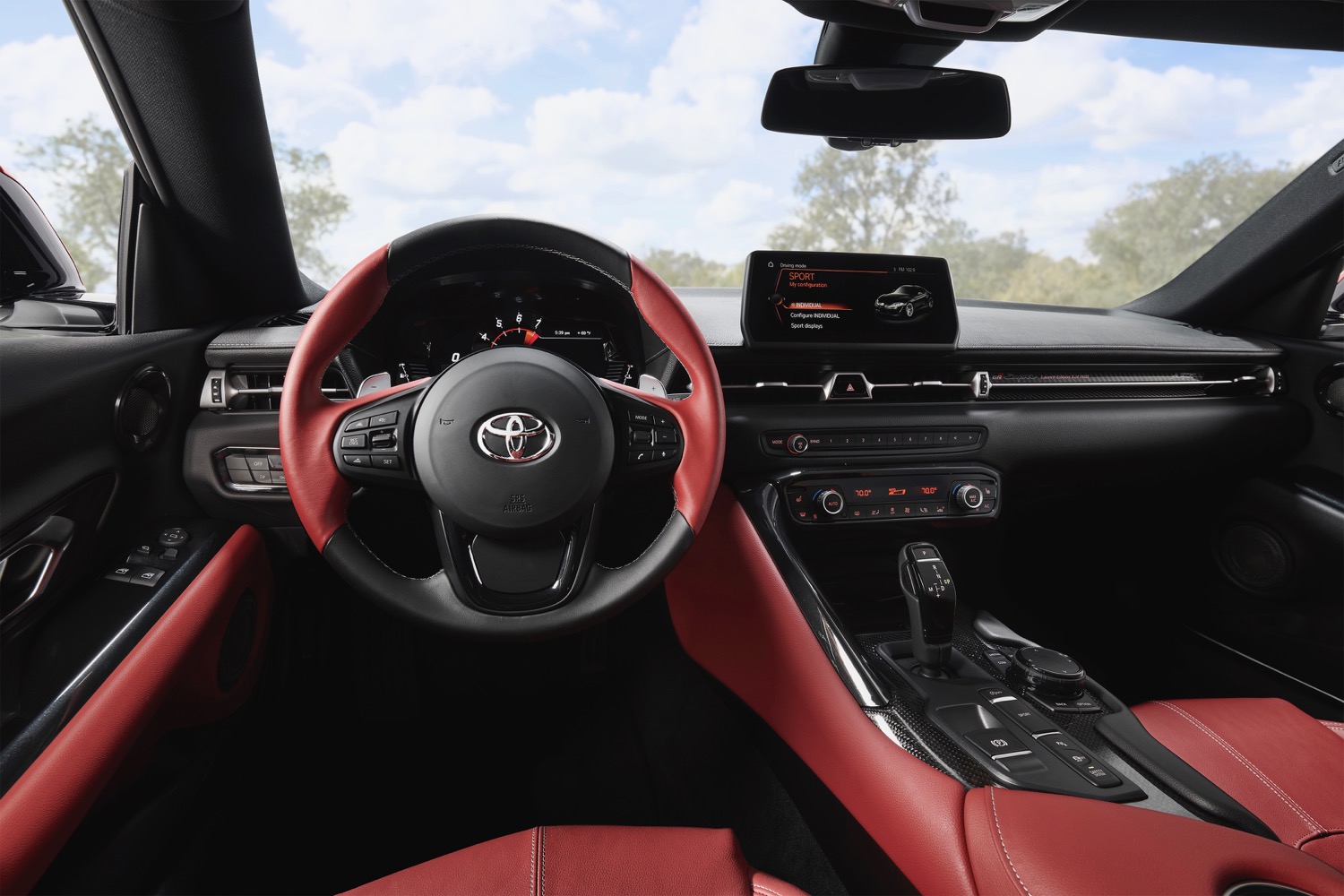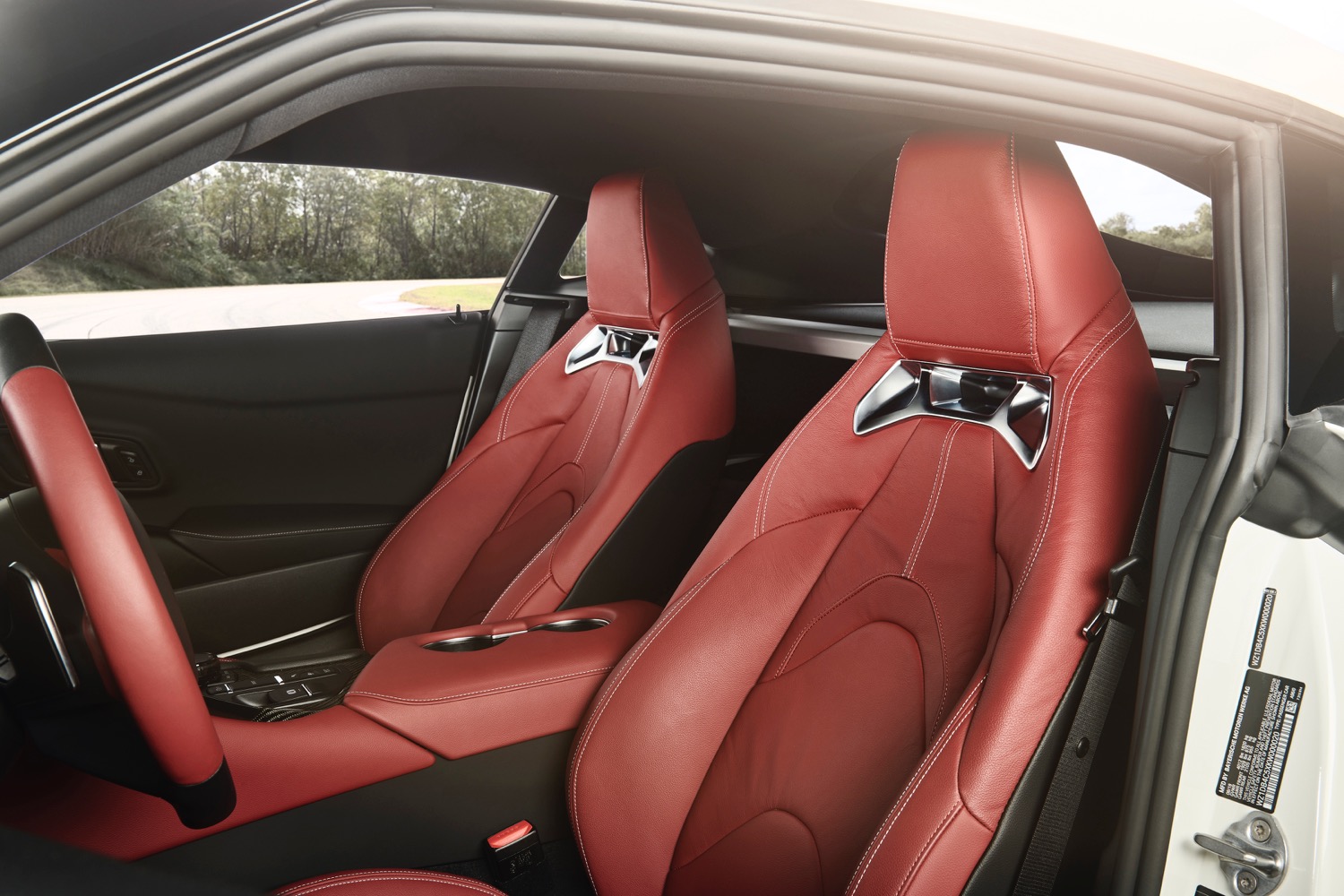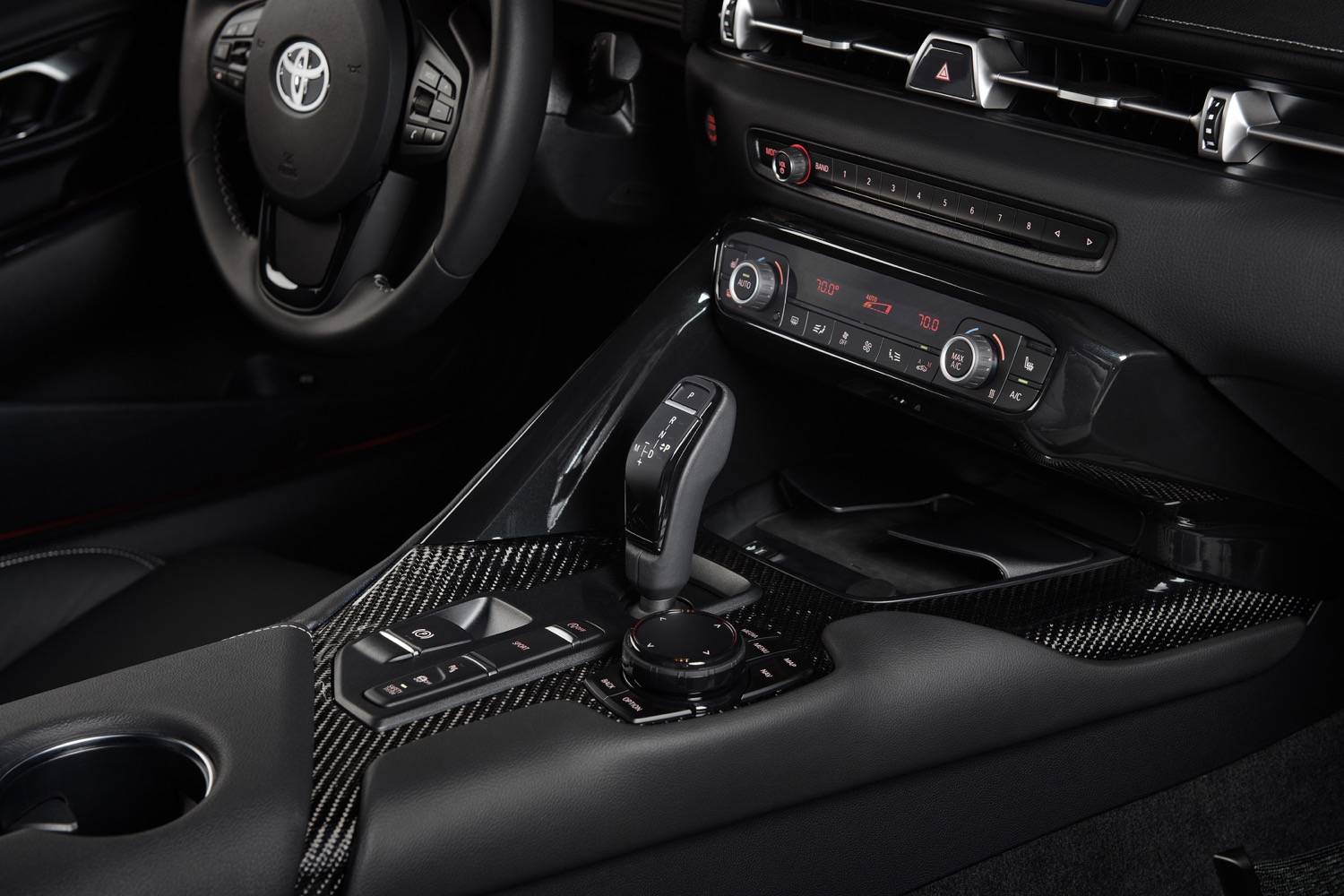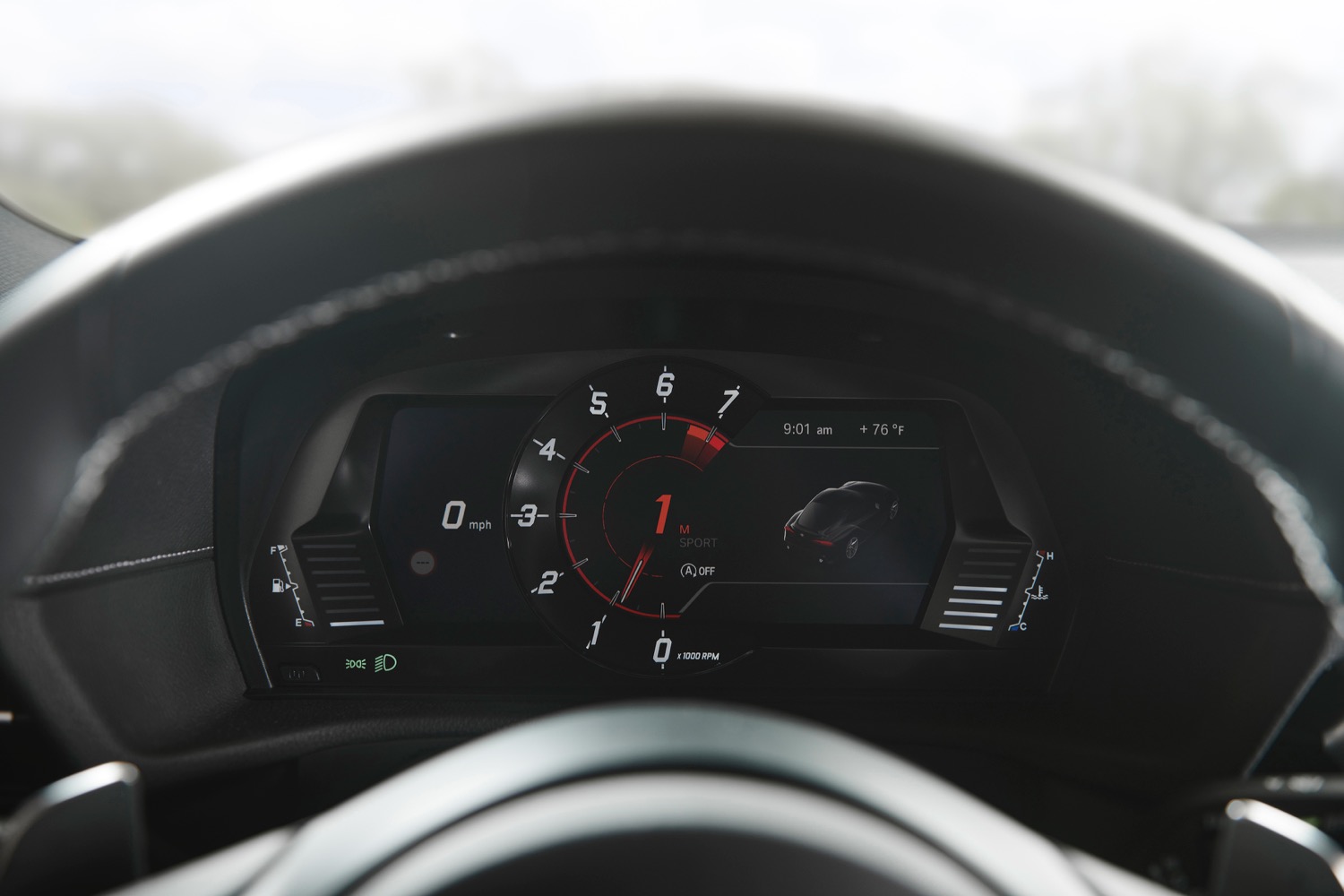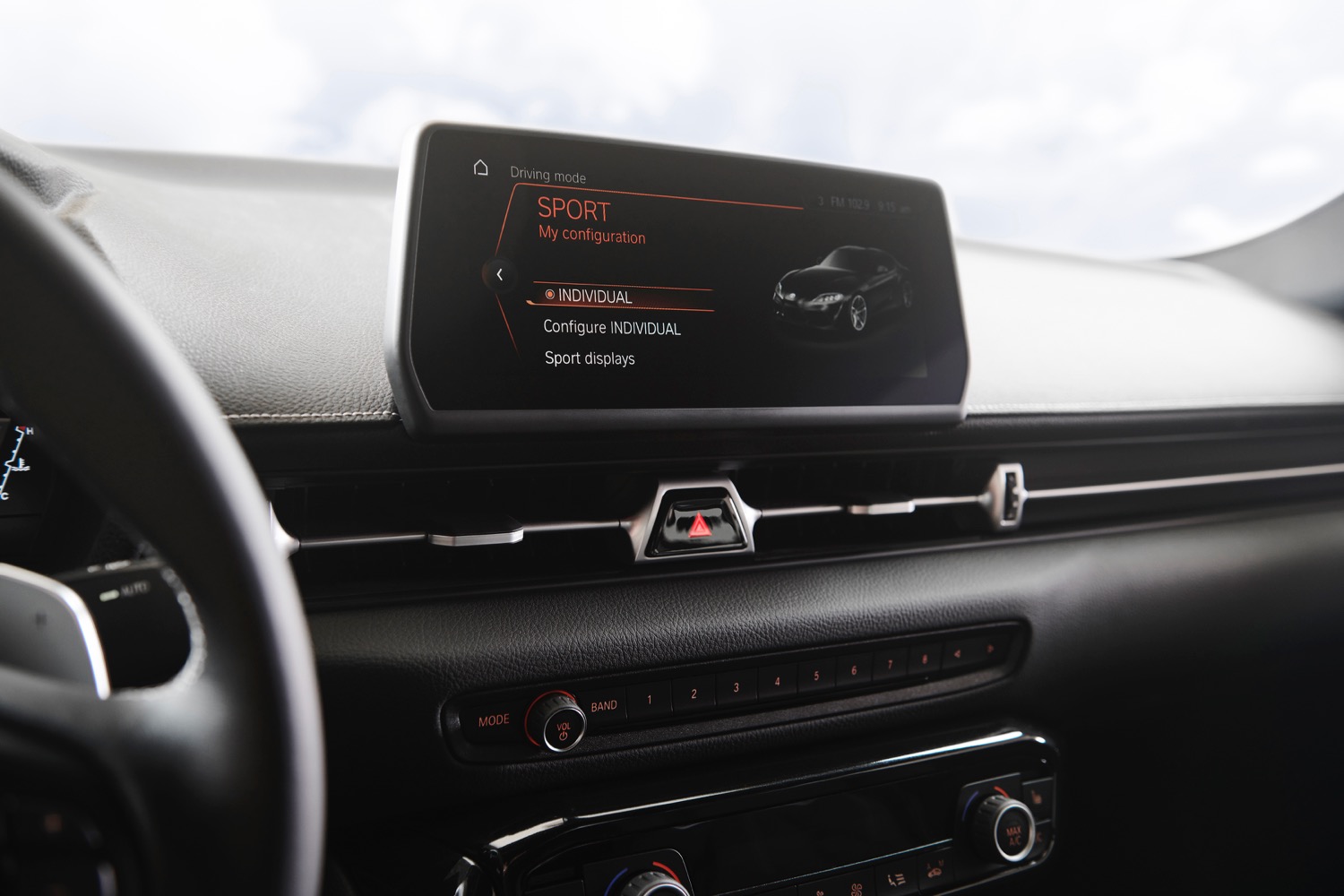The 2019 Detroit Auto Show was packed with new cars, but the 2020 Toyota Supra was the one everyone had been waiting for. The sports car is one of Toyota’s most iconic models, thanks to a star-making turn in The Fast and the Furious. It hadn’t been sold in the United States since 1998, and the last-generation model went out of production globally in 2002. Ever since, car enthusiasts have eagerly awaited the Supra’s resurrection. Now the wait is finally over: Toyota has released full details about its born-again sports car, including pricing, performance specifications, and fuel economy figures.
The fifth-generation 2020 Supra — code-named A90 — has looks that will put even the bright orange, fourth-generation Fast and Furious movie car to shame. The styling is cribbed from the well-received FT-1 concept, which first appeared in 2014. It’s a rare example of concept car styling making it to production mostly undiluted. Toyota claims design elements also reference the fourth-generation Supra and the 1967 2000GT sports car, which appeared in the James Bond film You Only Live Twice.
It may be a reservoir for Toyota’s performance heritage, but under the skin, the 2020 Supra shares a platform with the 2019 BMW Z4. The Supra also gets the same powertrain as the top M40i version of the BMW: It’s a 3.0-liter, turbocharged straight-six powering the rear wheels through an eight-speed automatic transmission (Toyota did not mention the availability of a manual).
While the Z4 M40i boasts a claimed 382 horsepower and 369 pound-feet of torque, the Supra is rated at 335 hp and 365 lb-ft. That’s still enough for zero to 60 mph in a brisk 4.1 seconds, according to Toyota. Top speed is electronically limited to 155 mph. An electronically controlled rear differential metes out power to the rear wheels, and Toyota claims a 50/50 front/rear weight distribution, which should have a positive effect on handling.
The straight-six makes the Supra surprisingly efficient for a sports car. Fuel economy checks in at 24 mpg in the city, 31 mpg on the highway, and 26 mpg in a combined cycle, according to the Environmental Protection Agency (EPA). The four-cylinder-powered model sold in Japan is likely the efficiency champ of the lineup, but Toyota isn’t planning on selling it in the United States — at least not yet.
Toyota and BMW jointly developed the Supra/Z4 platform, and they overlap in some areas, but each automaker tuned and tweaked its version separately. For example, Toyota claims to have reinforced the rear structure based on feedback from its Gazoo Racing division, which is taking the Supra to the track. While some automakers offer a dizzying array of adjustable settings, Toyota will also keep things simple with two driving modes: Normal and sport.
Toyota breaks the Supra lineup down into two trim levels named 3.0 and 3.0 Premium, respectively. The list of standard features includes a 6.5-inch touchscreen with Bluetooth connectivity, Alcantara upholstery, an adaptive suspension, forward collision warning, launch control, and shift paddles. 3.0 Premium models benefit from an 8.8-inch touchscreen, navigation, wireless Apple CarPlay (but no Android Auto), a 12-speaker sound system, wireless phone charging, and a color head-up display. It also gets heated, leather-upholstered seats.
Buyers have two option packages to choose from. Priced at $1,195 and offered on both trims, the driver assistance package bundles adaptive cruise control, blind spot monitoring, rear cross traffic alert, and parking sensors. The 3.0 models can be upgraded with navigation and a JBL audio system for an additional $2,460.
Enthusiasts will get their hands on either of the aforementioned trim levels after Toyota sells out of the Launch Edition model. Limited to 1,500 cars, it’s an evolution of the 3.0 Premium with more features including automatic emergency braking and automatic high beams. It’s offered in absolute zero white, nocturnal black, or renaissance red 2.0, and it gets red mirror caps plus 19-inch alloy wheels. Inside, every Launch Edition model comes with carbon fiber accents, and a plaque engraved with the car’s serial number.
The 2020 Toyota Supra will go on sale in the United States in the summer of 2019. Pricing starts at $49,990 for the 3.0 before a mandatory $930 destination charge enters the equation. The 3.0 Premium costs $53,990, while the Launch Edition will retail for $55,250. To add context, the BMW Z4 starts at approximately $50,000 with a four-cylinder engine under the hood, and about $65,000 with a more powerful evolution of the Supra’s straight-six. The buyer who bought the first one paid considerably more, though.
Toyota offered the very first Supra to the highest bidder at an auction held in Scottsdale, Arizona. The buyer’s identity hasn’t been released, but we know he or she paid $2.1 million for the car. It’s one of a kind. It’s finished in flat gray with red mirror caps, it rides on black wheels, and it wears red upholstery inside. Toyota CEO Akio Toyoda signed the engine bay, and he gave the buyer the racing suit, the driving gloves, the shoes, and the helmet he wore while he personally tested the Supra during its development phase.

$2.1 million probably sounds like an immense amount, even with the gear included, and it is. Rest assured, however, Toyota will donate the proceeds from the sale to the American Heart Foundation and to a charity called the Bob Woodruff Foundation, which helps injured veterans and their families.
Updated on April 4, 2019: Added fuel economy figures.

